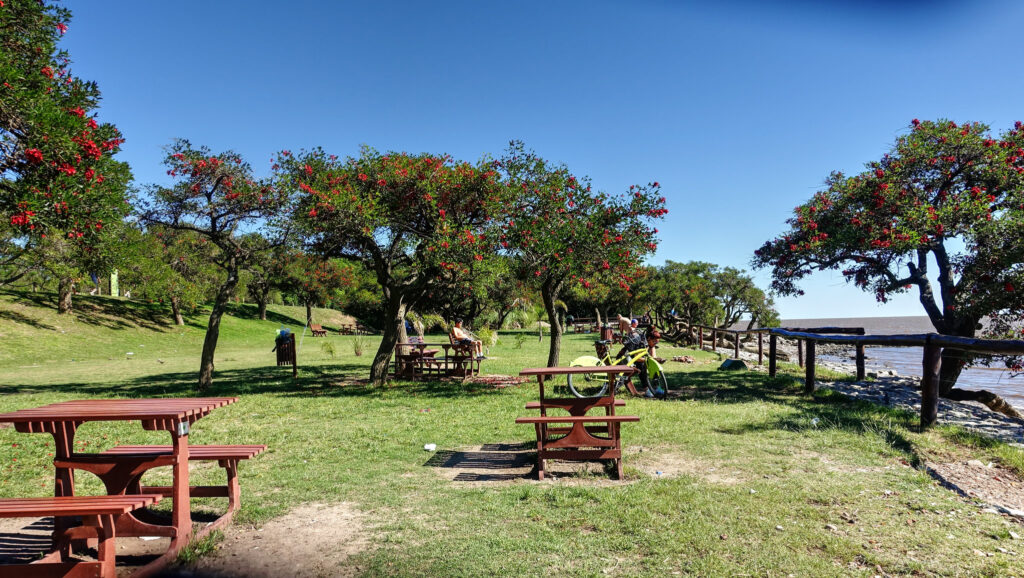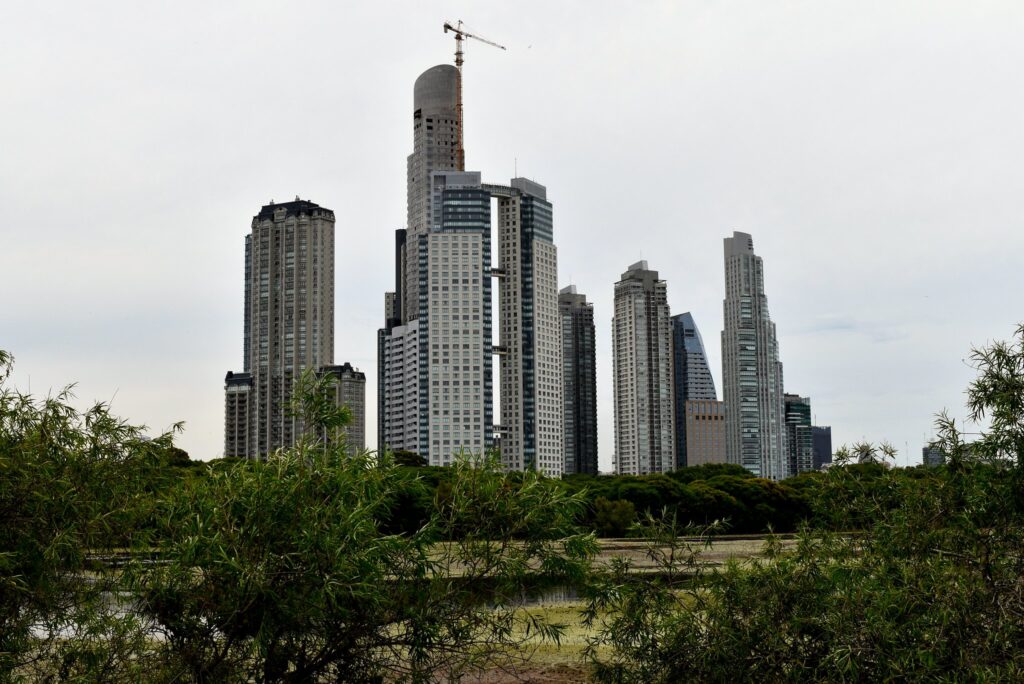Although the City of Buenos Aires has green spaces distributed throughout its territory, the Costanera Sur Ecological Reserve is the most important and valuable of all. Its 350 hectares include lagoons, fauna and flora, crossed by pedestrian paths so that visitors can tour the place and enjoy a natural escape.
Offering a privileged view of the Río de la Plata and the City of Buenos Aires, visiting the Costanera Sur Ecological Reserve is a “green” alternative that allows us to get away, at least for a moment, from the office buildings, vehicle traffic and pollution of the big city.
Buenos Aires Ecological Reserve: What You Need to Know Before Your Visit
What is the Buenos Aires Ecological Reserve?
The Buenos Aires Costanera Sur Ecological Reserve is the most important natural reserve in the City of Buenos Aires. Spanning 350 hectares, it is located in the Puerto Madero neighborhood and forms part of an ecological corridor known as the Ecoroute of the Río de la Plata. This corridor extends over 100 kilometers, connecting green spaces and protected areas within the Metropolitan Area of Buenos Aires (AMBA) and its surroundings.
Within the Ecological Reserve, you’ll find an impressive 2,000 animal species, including birds, mammals, amphibians, and reptiles. The reserve also features native vegetation and viewpoints overlooking the Río de la Plata.
A Brief History of the Area
In the early 20th century, the current Ecological Reserve functioned as the Municipal Bathing Resort. Thousands of Buenos Aires residents would visit to swim in the river and later enjoy coffee or a meal at nearby cafés.
Over time, water pollution discouraged visitors, and the area gradually fell into disuse.
In the 1970s, a project was initiated to fill in this part of the river to enable the construction of buildings and avenues. However, the instability of the terrain and the high risk of future flooding rendered the project unfeasible.
The period of abandonment that followed allowed for the spontaneous regeneration of biodiversity and the landscape. Environmental organizations seized this opportunity to conduct educational activities, and in 1986, they presented a proposal to the authorities for the creation of an Ecological Reserve.
Despite several fires, many of human origin, since its establishment in 1986, the Ecological Reserve remains alive, protected, and undergoing various renovation projects to facilitate public visitation.
Recognitions and Awards
The Ecological Reserve has received several national and international recognitions, including:
- 1994: Declared of Municipal Tourist Interest by the Municipality of Buenos Aires
- 1994: Declared of National Interest by the National Secretariat of Tourism
- 2005: Designated as a RAMSAR Site for being considered a Wetland of International Importance
- 2005: Recognized as an Important Bird Area by BirdLife International and Aves Argentinas
Birdwatching
The reserve is one of the best natural locations for birdwatching in the world. In fact, international specialists visit the Ecological Reserve to observe the more than 343 bird species that fly in the area.
Interpretative Walkways
Inaugurated in 2023, these walkways aim to make pedestrian paths safe not only for young people and athletes but also for people with disabilities, elderly visitors, and children.
The Ecological Reserve is open from Tuesday to Sunday, from 8:00 AM to 6:00 PM. From November to March, closing time is extended by one hour.
In case of rain, the Ecological Reserve remains closed, as well as the day following heavy rain.

Where is the Buenos Aires Ecological Reserve?
The Ecological Reserve is located on a large island and is connected to the Puerto Madero neighborhood by six access bridges.
It is situated next to what was once the old coastal promenade along the Río de la Plata, to the east of Buenos Aires City.
The area surrounding the Ecological Reserve is purely natural, filled with fauna and flora. To the east, south, and north of the reserve lies the Río de la Plata, while to the west, it borders Puerto Madero.
Puerto Madero is known for its modern design and commercial activity, featuring restaurants, food shops, and a promenade popular with tourists seeking to enjoy the docks and basins.
Additionally, the neighborhoods of San Telmo (to the southwest), Monserrat (to the west), and Retiro (to the northwest) are located near Puerto Madero.
How to Get to the Buenos Aires Ecological Reserve?
To reach the Buenos Aires Ecological Reserve, you can take one of the bus lines that go to the Costanera Sur. Most buses travel along Avenida L. Alem and its continuation, Paseo Colón, which runs parallel to the eastern edge where the access points are located.
Only a few bus lines pass closer to the Ecological Reserve, so in most cases, you will need to walk approximately 800 meters.
Some of the bus lines that pass nearby include: 2, 7, 20, 23, 91, 103, 115, 126, 129.
Among the subway lines that bring you closer to Puerto Madero are Line E (Correo Central Station), Line B (Leandro N. Alem Station), and, a bit farther away, Line A (Plaza de Mayo Station). In all cases, you will need to walk to the Ecological Reserve via one of the bridges that cross the docks.
If you are arriving by car, bicycle, or on foot, it’s worth noting that out of the six bridges crossing the docks of Puerto Madero, five are for both vehicles and pedestrians: Cecilia Grierson (extension of Avenida Córdoba), Macacha Güemes (from Perón Street), Azucena Villaflor (from Avenida Belgrano), Rosario Vera Peñaloza (from Estados Unidos Street), and Elvira Rawson de Dellepiane (from Brasil Street). One is pedestrian-only: the Puente de la Mujer.

Why Visit the Buenos Aires Ecological Reserve?
Cycling or Walking Tours
The Buenos Aires Ecological Reserve is a popular spot for cyclists and runners who take advantage of its 350 hectares and pathways to complete their circuits.
Bicycles are allowed in the reserve, except when the paths are not in suitable condition. In such cases, cyclists must lock their bikes at the entrance.
Guided Tours
If you prefer, you can take a guided tour of the Ecological Reserve. These tours are free and take place on Saturdays, Sundays, and public holidays at 10:30 AM and 3:30 PM from April 1st to October 31st. From November 1st to March 30th, tours are held at 9:30 AM and 4:00 PM.
Flora and Fauna
The diverse wildlife of the Ecological Reserve is an undeniable attraction.
Among the vegetation and beyond the paths, you can find around 307 bird species: small and discreet, large and imposing. There are also rodents, reptiles, and 18 species of mammals, along with butterflies and approximately 22 species of fish.
Additionally, 575 plant species, 42 fungi species, and thousands of trees are spread across the 350 hectares of the Buenos Aires Ecological Reserve.
Lagoons and Marshes
These are the most representative environments of the reserve. They are not very deep, and their water levels fluctuate throughout the year, depending on rainfall and evaporation rates.
Here, you can observe various bird species coexisting peacefully among the water and vegetation.
(Featured Image Source: pabs242/flickr.com)


